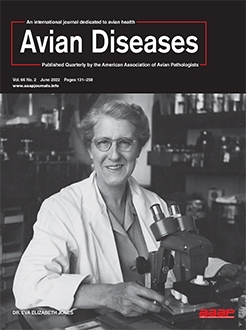Avian influenza (AI) is a zoonotic disease that will likely be involved in future pandemics. Because waterbird movements are difficult to quantify, determining the host-specific risk of Eurasian-origin AI movements into North America is challenging. We estimated relative rates of movements, based on long-term evolutionary averages of gene flow, between Eurasian and North American waterbird populations to obtain bidirectional baseline rates of the intercontinental movements of these AI hosts. We used population genomics and coalescent-based demographic models to obtain these gene-flow–based movement estimates. Inferred rates of movement between these continental populations varies greatly among species. Within dabbling ducks, gene flow, relative to effective population size, varies from ∼3 to 24 individuals/generation between Eurasian and American wigeons (Mareca penelope and Mareca americana) to ∼100–300 individuals/generation between continental populations of northern pintails (Anas acuta). These are evolutionary long-term averages and provide a solid foundation for understanding the relative risks of each of these host species in potential intercontinental AI movements. We scale these values to census size for evaluation in that context. In addition to being AI hosts, many of these bird species are also important in the subsistence diets of Alaskans, increasing the risk of direct bird-to-human exposure to Eurasian-origin AI virus. We contrast species-specific rates of intercontinental movements with the importance of each species in Alaskan diets to understand the relative risk of these taxa to humans. Assuming roughly equivalent AI infection rates among ducks, greater scaup (Aythya marila), mallard (Anas platyrhynchos), and northern pintail (Anas acuta) were the top three species presenting the highest risks for intercontinental AI movement both within the natural system and through exposure to subsistence hunters. Improved data on AI infection rates in this region could further refine these relative risk assessments. These directly comparable, species-based intercontinental movement rates and relative risk rankings should help in modeling, monitoring, and mitigating the impacts of intercontinental host and AI movements.
How to translate text using browser tools
2 May 2022
Estimating Movement Rates Between Eurasian and North American Birds That Are Vectors of Avian Influenza
Fern Spaulding,
Jessica F. McLaughlin,
Travis C. Glenn,
Kevin Winker
ACCESS THE FULL ARTICLE

Avian Diseases
Vol. 66 • No. 2
August 2022
Vol. 66 • No. 2
August 2022
Alaska
avian influenza
Beringia
gene flow
subsistence harvest
vector species
waterfowl




